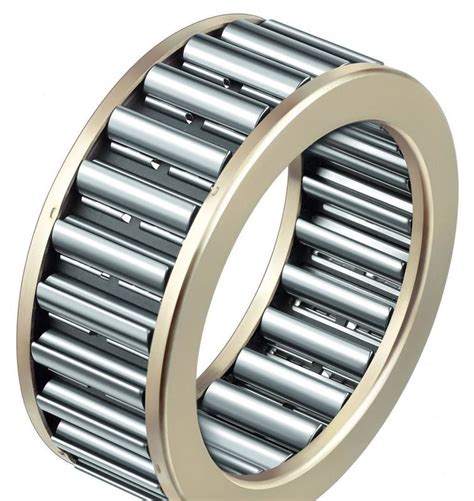The Comprehensive Guide to Needle Roller Bearings: Unveiling Their Precision and Versatility
Introduction
Needle roller bearings are indispensable components in various industrial applications, known for their exceptional precision, high load capacity, and compact design. This comprehensive guide delves into the intricate world of needle roller bearings, exploring their types, benefits, and practical applications.
Types of Needle Roller Bearings
Needle roller bearings come in different configurations to meet diverse application requirements:
-
Drawn Cup Needle Roller Bearings: These bearings feature a thin-walled drawn cup and are cost-effective for low-load applications.
-
Needle Rollers with Inner Rings or Cages: These bearings have needle rollers retained within an inner ring or cage, providing higher load capacity and radial stiffness.
-
Needle Thrust Bearings: These bearings are specifically designed to handle axial loads and feature needle rollers arranged in a thrust washer configuration.
Benefits of Needle Roller Bearings
Needle roller bearings offer numerous advantages that make them ideal for various applications:

-
Compact Size: Their small cross-section allows for space-saving designs.
-
High Load Capacity: Despite their diminutive size, needle roller bearings can bear high radial and/or axial loads.
-
Low Friction: The rolling contact between needle rollers and races minimizes friction, reducing operating temperatures and energy consumption.
-
High Precision: Needle roller bearings provide precise rotational and linear motion, ensuring accuracy and consistency in critical applications.
-
Durability: These bearings are manufactured using high-quality materials and undergo rigorous quality control, ensuring long service life.
Applications of Needle Roller Bearings
Needle roller bearings find widespread use in a multitude of industries, including:
-
Automotive: Transmissions, engines, steering systems
-
Industrial Machinery: Machine tools, printing presses, textile equipment
-
Medical Devices: Surgical robotics, imaging systems
-
Aerospace: Landing gear, actuators
Step-by-Step Guide to Selecting Needle Roller Bearings
To select the appropriate needle roller bearing for your application, follow these steps:
-
Determine the Load: Calculate the radial, axial, or combined load that the bearing will experience.
-
Choose the Type: Select the bearing type that best suits the load, space, and accuracy requirements.
-
Specify the Dimensions: Determine the bore diameter, outer diameter, and width of the bearing based on the shaft and housing dimensions.
-
Consider Materials and Lubrication: Select materials and lubrication that are compatible with the operating environment and load conditions.
Common Mistakes to Avoid
To prevent premature failure or suboptimal performance, avoid these common mistakes:
-
Overloading: Exceeding the rated load capacity can damage the bearing.
-
Improper Mounting: Incorrect mounting can cause misalignment, vibration, and premature wear.
-
Inadequate Lubrication: Insufficient or improper lubrication can lead to increased friction and shortened bearing life.
-
Ignoring Environmental Factors: Factors such as temperature, dust, and moisture can adversely affect bearing performance.
Tips and Tricks
-
Maximize Load Capacity: Use multiple needle roller bearings in parallel to increase load capacity.
-
Reduce Friction: Use low-friction coatings or lubricants to minimize energy consumption and heat generation.
-
Extend Service Life: Implement regular maintenance practices, including lubrication, cleaning, and inspection.
-
Prevent Corrosion: Protect the bearings from moisture and corrosive environments to prolong their lifespan.
Why Needle Roller Bearings Matter
Needle roller bearings play a pivotal role in modern machinery by providing:

-
Enhanced Performance: Improved accuracy, precision, and efficiency in critical applications.
-
Increased Reliability: Reduced downtime and maintenance costs due to their durability and high load capacity.
-
Cost Savings: Compact size and low friction contribute to overall system cost reduction.
Call to Action
If you are looking for a high-performance, compact, and durable solution for your bearing needs, consider needle roller bearings. Explore the various types, benefits, and applications described in this guide to make an informed choice. By following the best practices for selection, installation, and maintenance, you can unlock the full potential of needle roller bearings and enhance the performance and reliability of your machinery.
Additional Resources
[1] SKF Engineering Handbook (2019)
[2] Timken Roller Bearings Handbook (2022)
[3] NSK Precision Components Guide (2023)
Humorous Stories and Lessons Learned
-
The Overloaded Needle Roller Bearing
A machine operator complained of frequent bearing failures. Inspection revealed that the bearing was overloaded due to an improperly sized drive pulley. Lesson: Ensure proper load calculations and component sizing.
-
The Misaligned Needle Roller Bearing
A robotics engineer noticed a vibration issue in a surgical robot. The culprit turned out to be a misaligned needle roller bearing in the arm joint. Lesson: Pay attention to precision mounting and alignment procedures.
-
The Neglected Needle Roller Bearing
A factory manager ignored maintenance recommendations for needle roller bearings in a printing press. The bearings eventually seized, causing a catastrophic machine failure. Lesson: Regular maintenance is essential for optimal bearing performance and longevity.
Tables
Table 1: Needle Roller Bearing Types and Applications
| Type |
Applications |
| Drawn Cup Needle Roller Bearings |
Low-load applications, such as automotive transmissions and power tools |
| Needle Rollers with Inner Rings or Cages |
Medium-to-high load applications, such as machine tools and industrial pumps |
| Needle Thrust Bearings |
Axial load applications, such as compressors and clutches |

Table 2: Advantages and Disadvantages of Needle Roller Bearings
| Advantages |
Disadvantages |
| Compact size |
Sensitive to misalignment and overloading |
| High load capacity |
Require precise mounting and lubrication |
| Low friction |
Can generate noise at high speeds |
| High precision |
Limited axial load capacity in some types |
Table 3: Common Mistakes and Remedies in Needle Roller Bearing Selection and Operation
| Mistake |
Remedy |
| Overloading |
Select a bearing with higher load capacity or use multiple bearings in parallel |
| Improper Mounting |
Ensure proper installation and alignment procedures |
| Inadequate Lubrication |
Implement regular lubrication with appropriate lubricants |
| Ignoring Environmental Factors |
Use corrosion-resistant materials or protective measures if exposed to harsh environments |

